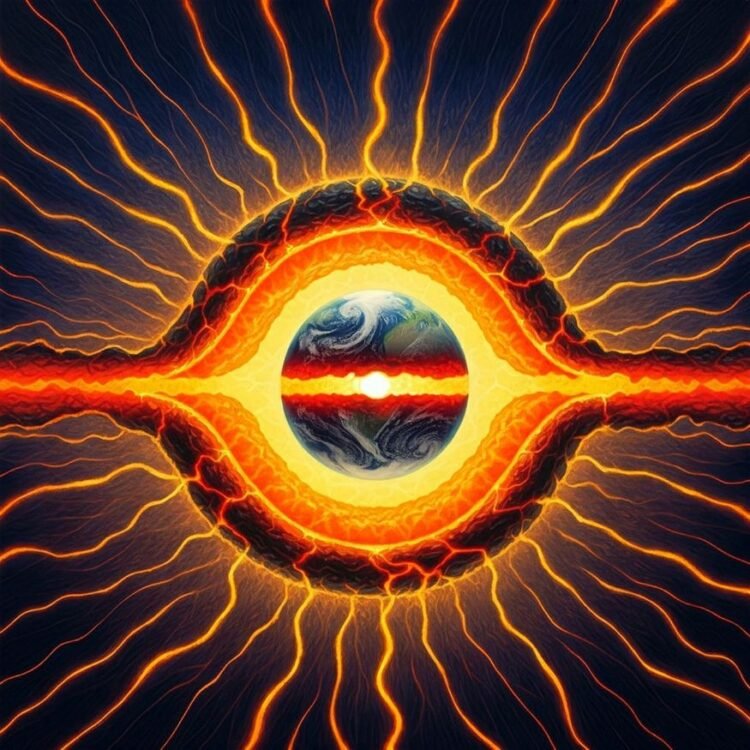Forget Santa—the magnetic north pole might just be the Earth’s ultimate escape artist, zigzagging across the Arctic as if it’s auditioning for a global adventure flick.

This celestial hotspot has been casually striding across the Arctic like it’s got a bucket list to conquer, leaving scientists both baffled and intrigued.
You might be wondering, why is the magnetic north pole moving, and what does it mean for us mere mortals? Hold tight (no need for clichés)..
Let’s explore why this shift matters—not just for scientists but for anyone who relies on modern technology or wonders how animals navigate their epic migrations.
A Quick Geography Lesson: Magnetic vs. Geographic North Pole

If you’ve ever been lost on a hike (blame it on a faulty GPS, right?), you’ve probably relied on a compass to save the day.
That trusty needle points to the magnetic north pole, not the geographic one.
Unlike its geographical sibling—which stays put at the top of the world—the magnetic pole is always on the move.
Think of it as the rebellious sibling who refuses to stay home.
Since records began in the 1830s, Earth’s magnetic north pole has shifted a jaw-dropping 2,250 kilometers (around 1,400 miles).
It’s currently racing toward Siberia at a pace that’s unsettling GPS systems and navigation tools globally.
For perspective, it used to amble along at about 10 miles a year. In the 1990s, it hit the gym, accelerating to 34 miles annually.
It’s like the magnetic pole decided to upgrade from a stroll to a full-on sprint.
What’s Causing the Magnetic North Pole to Move?
Blame it on Earth’s molten iron core. Deep beneath the surface, liquid metal swirls in chaotic, unpredictable patterns.
This molten ballet generates Earth’s magnetic field, a phenomenon scientists call the “geodynamo.”

When the dance steps change—which happens unpredictably—so does the magnetic pole.
Recent studies suggest that between 1970 and 1999, a shift in molten iron flow altered the balance of magnetic forces beneath Canada.
This “Canadian blob” of magnetism lost its dominance, pushing the magnetic north pole toward Siberia.
It’s like Canada and Russia are in a magnetic tug-of-war, and Russia’s winning.
Why Does This Matter?
You might think, “So what if the magnetic pole moves? It’s not like my Netflix stream cares, right?”
But here’s the surprising twist (much better, right): GPS systems, planes, ships, and even submarines depend on magnetic data to stay on course.
The World Magnetic Model, updated every five years, helps recalibrate these systems, ensuring we don’t end up steering a ship into, say, an iceberg.

Even smartphones use magnetic north for their compass apps. And let’s not forget about migratory animals like birds and whales, which rely on Earth’s magnetic field to navigate.
A shifting pole could disrupt their natural routes, creating ecological ripple effects we’re only beginning to understand.
Could the Poles Flip?
Now for the dramatic twist: scientists say Earth’s magnetic poles have flipped before, and they’ll flip again.
During these reversals, magnetic north becomes south and vice versa.
Don’t panic just yet—the last flip was 780,000 years ago, and experts estimate the next one is thousands of years away.
But here’s the catch: as the field weakens during a flip, Earth becomes more vulnerable to cosmic radiation.
Satellites, power grids, and communication networks could take a hit.
Although it’s not an immediate threat, its potential to disrupt global systems keeps scientists vigilant.
Pop Culture Meets Magnetic Science
In a world where trends change faster than you can say “new aesthetic,” the magnetic north pole’s wanderlust feels like the ultimate influencer move.
It’s the ultimate nomad, proving that even our planet likes to switch things up. Who knows?
Maybe its next move will inspire a sci-fi blockbuster or an indie band’s next album title (Magnetic Drift, anyone?).
As we watch the magnetic north pole’s journey unfold, it’s a reminder that Earth is anything but static.
Whether you’re a scientist, a sailor, or just someone trying to find your way, this phenomenon is a magnetic pull we can’t ignore—literally.
So, while the magnetic north pole keeps us guessing, let’s embrace its movement as proof of Earth’s dynamic, ever-changing nature. to Earth’s dynamic, ever-changing nature.
And who knows? Maybe it’ll inspire your next playlist or road trip. Just remember to appreciate the sheer dynamism of the planet beneath your feet.
You might also like:
- Mandela Effect Quiz: How Well Do You Remember Reality?
- Beyond the Crunch: A Deep Dive into the Dorito Theory and Our Love for Addictive Habits
- Music Makes Us Hot? Science Says: Absolutely
- Are You Smarter Than a Fifth Grader? Test Your Knowledge with These 101 Mind-Bending Questions
- The Viral Math Genius Who’d Give Will Hunting a Run for his Money


